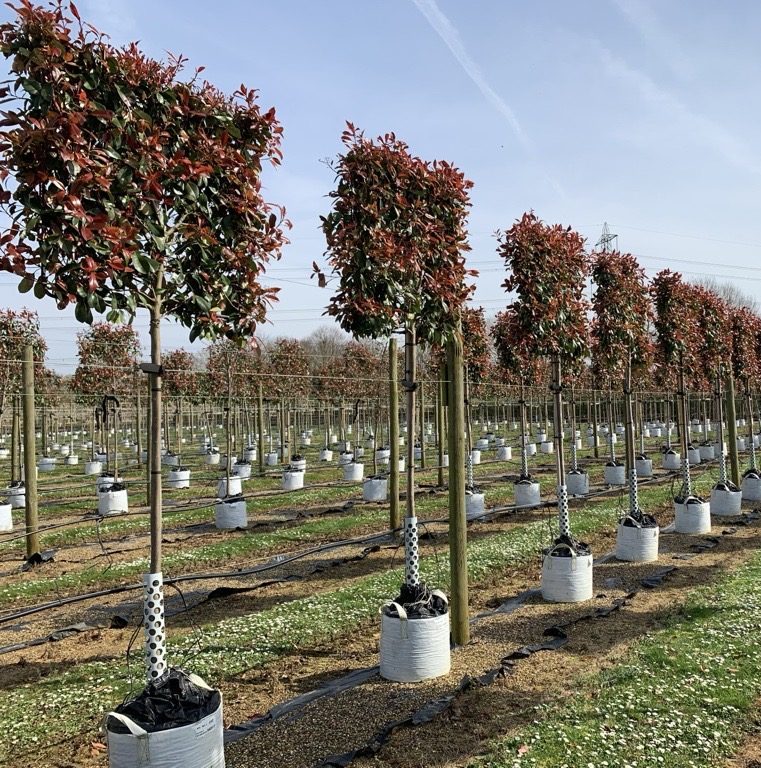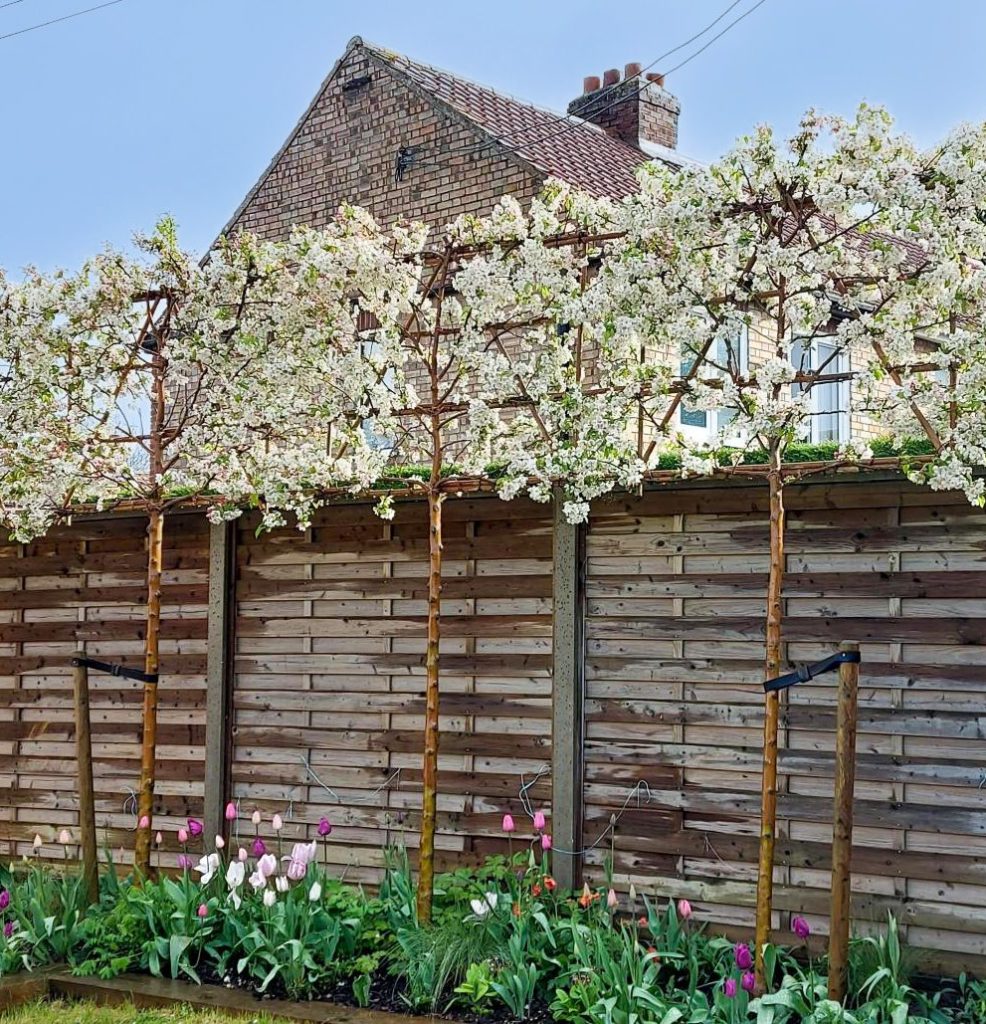What is the difference between pleached, topiary and espaliered trees?
There are many forms of pleached tree but at Barcham we mainly produce them to have a 1.8 metre clear stem that supports a flat bamboo panel 1.2 metres wide by 1 metre tall. This produces a ‘foliage window’ above fence height that is ideal for screening without taking any lateral room up in a small garden.
Pleached trees
We do a range of varieties as pleached stock including Carpinus betulus, Acer campestre, Pyrus calleryana Chanticleer, Liquidambar styraciflua Worplesdon, Malus Evereste & Rudolph, Tilia euchlora and Sorbus aria Lutescens.
Pleached trees

Pleached maintenance
Maintenance is easy, prune once a year in March back to the pleached frame to keep them tidy and in check. If you just leave them the tree will eventually reform its desired shape as nature intended and become a big tree.
We do pleached trees to varying stem heights depending on the wall or fence line they are set against. Recently we have just grown a Liquidambar pleach with only a 50cm clear stem to clear a very low retaining stone wall.
If you plant pleached trees with their frames about 50cm apart they will meet in the middle after one growing season to form a solid flat screen. Pleached trees will need staking like any other for the first couple of seasons after planting. Please see our planting guide
If you are after tiered branches rather than a solid panel of leaves you are wanting an espaliered tree rather than a pleach. These we grow to order as every requirement is different and there is a lot of work that goes into them.
Topiary trees
Topiary trees are another proposition! We were once commissioned to grow Hornbeam in nine foot letters spelling ‘Welcome to Doncaster’ and they are still seen growing well on the roundabout off the A1, Rotherham / Doncaster exit. I have seen trees fashioned as horses, cars or even dinosaurs, it just takes time to achieve, followed by a lot of little and often pruning maintenance
